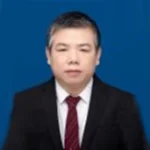Journal of Vibroengineering (JVE) ISSN (Print) 1392-8716, ISSN (Online) 2538-8460 publishes research papers presenting the latest results in the general area of vibration engineering. Mechanical vibrations and applications, fault diagnosis based on vibration signal analysis, seismic engineering, acoustics, and noise control are typical examples of the core areas of the Journal. The Journal is devoted to the publication of original research papers of a high technical standard representing theoretical and experimental aspects of engineering problems related to vibrations.
Established in 1997 and published 8 times a year (semi-quarterly). https://doi.org/10.21595/jve
Articles
Editorial board





All of Extrica's content is archived in Martynas Mazvydas National Library of Lithuania, which provides permanent archiving for electronic scholarly journals.
Vibroengineering is an essential and intricate field within engineering science, focusing on the study and application of mechanical vibrations. It explores the dynamic behavior of systems and structures under vibratory forces, aiming to understand, mitigate, or harness these vibrations for various engineering purposes.
What is Vibroengineering?
Vibroengineering encompasses the scientific principles and practices involved in understanding and controlling vibrations in engineering systems. It involves the study of how mechanical vibrations interact with and impact machinery, structures, and devices, seeking to optimize performance and prevent potential damage or failure caused by vibrational forces.
What are the uses of vibration?
- Diagnostics and Monitoring: vibrations are key indicators of the health and functioning of machinery. By analyzing vibration patterns, engineers can diagnose faults, predict maintenance needs, and prevent unexpected failures.
- Energy Harvesting: vibrations can be harnessed to generate electricity, especially in environments where traditional energy sources are unavailable or impractical.
- Noise Reduction: in noise and vibration control engineering, understanding vibrational behavior is crucial to design systems that minimize noise pollution and enhance the comfort and safety of living and working environments.
What are the three types of mechanical vibrations?
- Free Vibrations: occur when a system oscillates freely without any external force after an initial disturbance. These vibrations gradually diminish due to damping.
- Forced Vibrations: result from continuous external forces acting on a system at a frequency different from the system’s natural frequency, often leading to resonance.
- Damped Vibrations: involve energy loss in a vibrating system due to factors like friction, resulting in a gradual reduction in amplitude over time.
Key Areas and Editions
Journal of Vibroengineering
A cornerstone of research in the field, presenting peer-reviewed articles that offer deep insights into vibration analysis and noise control in engineering.
Vibroengineering Procedia
A vital resource that complements the journal, offering access to conferences and symposia papers, highlighting the latest developments in vibroengineering research.
Significance and Future Directions:
Vibration Engineering Analysis
Understanding what vibration engineering is fundamental for researchers and practitioners. It includes analyzing the effects of vibrations on machinery, structures, and systems, ensuring safety, efficiency, and innovation in engineering designs.
The Journal of Vibroengineering stands as a pivotal source of knowledge and research in the field of vibroengineering. Its commitment to advancing the study of engineering vibrations and noise control is evident in its comprehensive articles, open-access policy, and its significant impact factor. It continues to be an indispensable resource for both academic and practical applications in engineering.
























